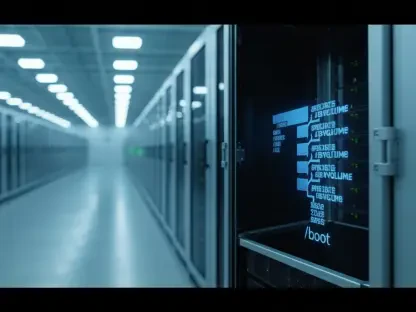In an era where products intertwine multiple complex components, Siemens Digital Industries Software and IBM embark on a groundbreaking collaboration to elevate systems engineering. The announcement of the Systems Modeler for SysML v2 unfolds as a pivotal advancement, weaving enhanced model-based systems engineering (MBSE) into the fabric of product development. This innovation stands as a strategic pillar within Siemens Xcelerator, addressing the layered intricacies inherent in modern mechanical, electrical, electronic, and software products. Central to their approach is the utilization of the SysML v2 open standard, a sophisticated toolset crafted for negotiating the convoluted territories of product specification and validation. As industries grapple with the need for greater integration across varied engineering domains, Siemens and IBM demonstrate their prowess in fostering collaboration. Their collective effort sees the merging of IBM’s seasoned Rhapsody Systems Engineering into the new software, promising users an unparalleled capability in developing products that are smarter and more resilient.
Enhancing Systems Engineering Collaboration
The Systems Modeler for SysML v2 emerges as more than a mere tool; it symbolizes an evolution in cross-domain collaboration among engineering teams. This web-based platform encourages seamless workflows across diverse engineering spheres, boosting alignment and operational efficiency. The integration of IBM’s Rhapsody Systems Engineering with Siemens’ extensive expertise amplifies the software’s credibility and appeal, positioning it as a central resource for teams dedicated to product innovation. By fostering collaboration among software, mechanical, and electrical divisions, engineers gain access to a streamlined development process that enhances productivity and cohesion. Ultimately, this partnership is a testament to the intertwined talent and experience of Siemens and IBM in pushing the boundaries of systems engineering. The integration with Siemens’ Teamcenter orchestrates a seamless flow of information across the entire product lifecycle, thus connecting systems-focused digital threads with open standards. Within this interconnected ecosystem, traceability and change management are thoroughly supported, ensuring modifications in system designs are effectively tracked and managed as they make their way to downstream teams. This coordination fosters not only efficiency but also maintains a stringent quality throughout the design, engineering, and manufacturing processes, which are crucial in delivering innovative future-ready products.
Leveraging Open Standards and Integrated Processes
Adopting SysML v2 signifies more than a technological advancement; it exemplifies a commitment to open standards and integrated processes that enhance systems engineering capabilities across various domains. This standardized modeling language is adept at specifying, analyzing, designing, verifying, and validating complex systems, providing engineers with a robust framework for confronting the challenges embedded in modern product development. The integration ensures a seamless translation of data and processes across domains, which aids in maintaining traceability and enforcing comprehensive change management procedures. This endeavor results in a cohesive collaboration that enhances productivity and foundational understanding, ultimately optimizing the engineering workflows. By embodying these principles, Siemens and IBM have positioned themselves at the forefront of a transformative approach to product development. The seamless integration supports lifecycle consistency and coherence, ensuring precise information transfer throughout the project phases. This strategic alignment underscores the importance of synchronized data flows, building a cohesive ecosystem that upholds quality and accuracy from design inception through to manufacturing. As industries gear up for the future, they stand equipped to deliver sustainable products through the digitally empowered framework enabled by Siemens Xcelerator. The enhanced collaboration and integration pave the way for innovative, efficient, and future-focused product development practices across diverse sectors.
A Path Forward for Sustainable Innovation
In today’s world of intricate products, Siemens Digital Industries Software and IBM have launched a groundbreaking collaboration to revolutionize systems engineering. The introduction of the Systems Modeler for SysML v2 marks a key advancement, seamlessly integrating model-based systems engineering (MBSE) into product development. This innovation is crucial within Siemens’ Xcelerator program, tackling the complexities of contemporary mechanical, electrical, electronic, and software products. At the heart of this initiative is the use of the SysML v2 open standard, an advanced toolset designed to navigate the complexities of product specification and validation. With industries seeking greater integration across diverse engineering fields, Siemens and IBM showcase their expertise in fostering collaboration. Their combined efforts integrate IBM’s experienced Rhapsody Systems Engineering into the new software, offering users a remarkable capability to create products that are not only smarter but also more robust and resilient.









